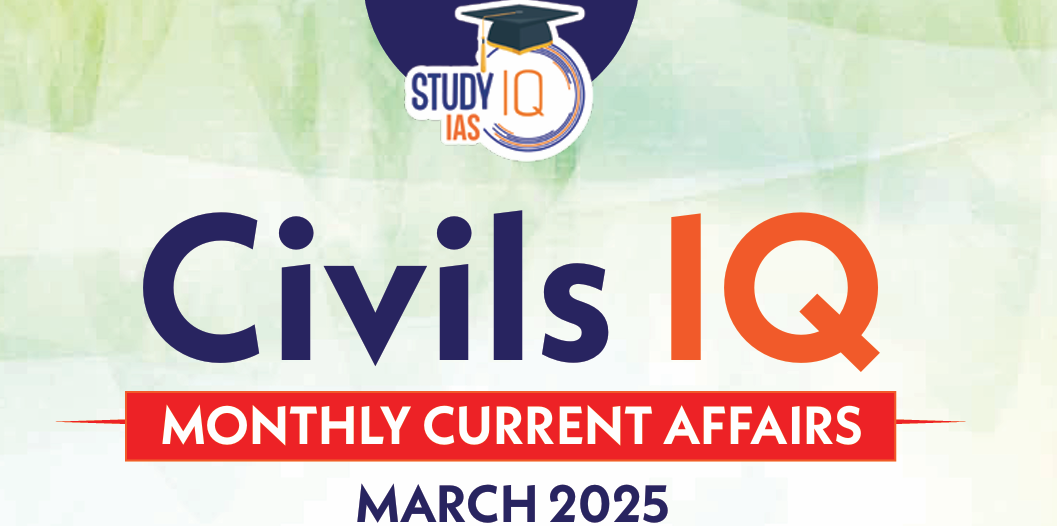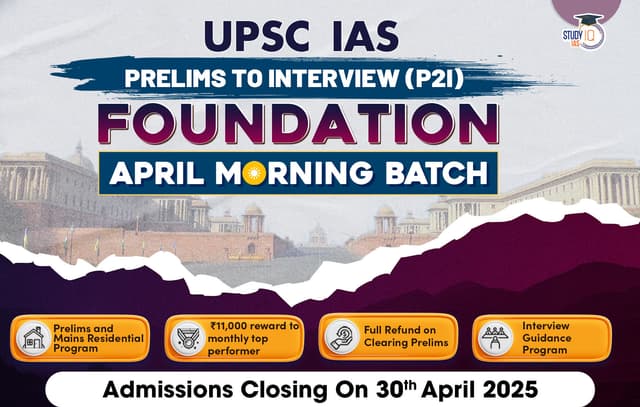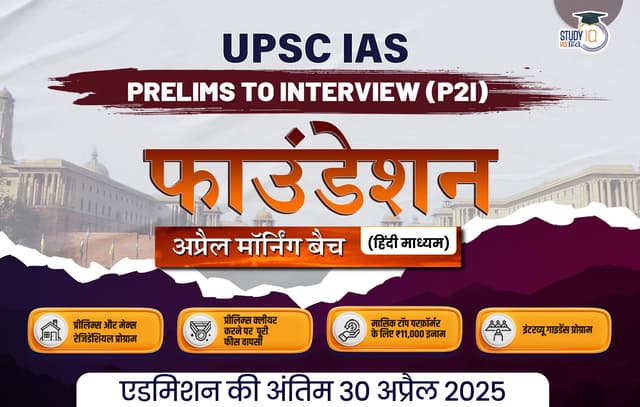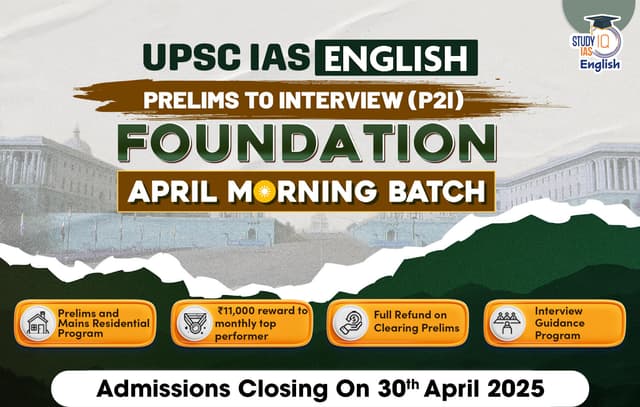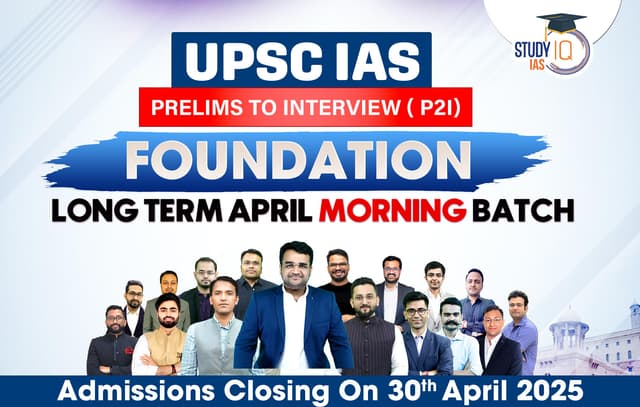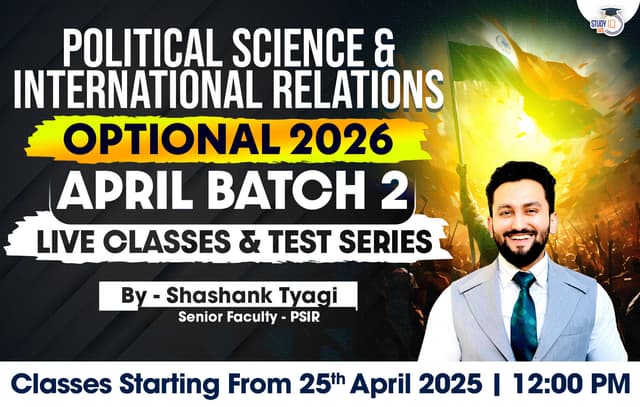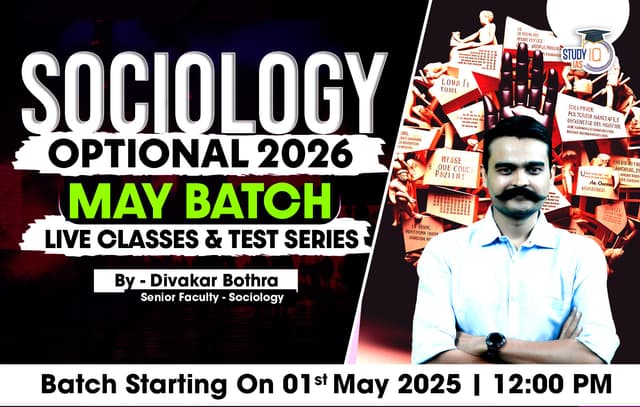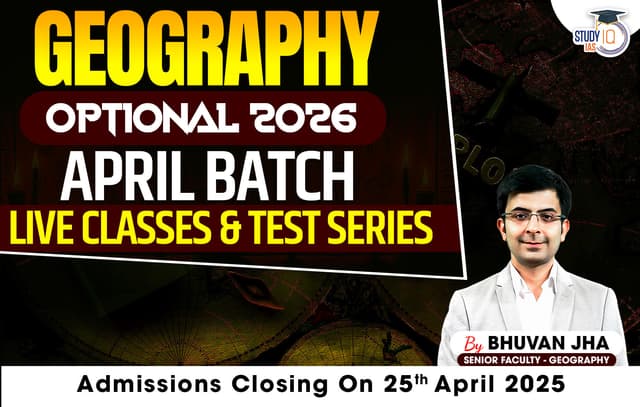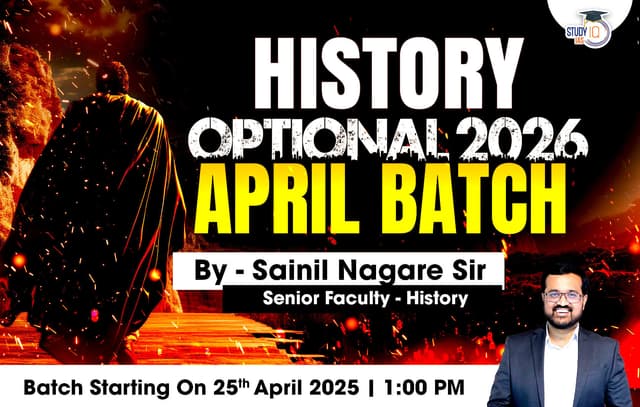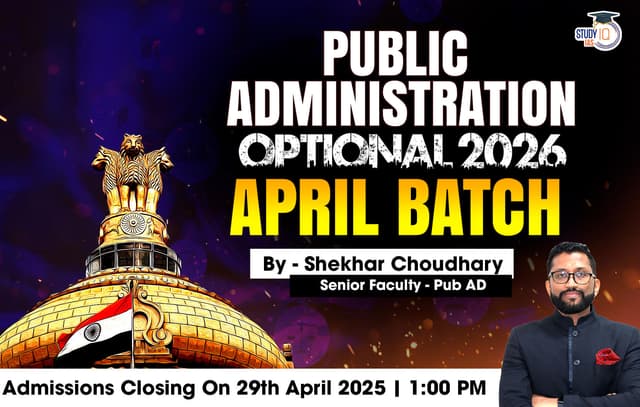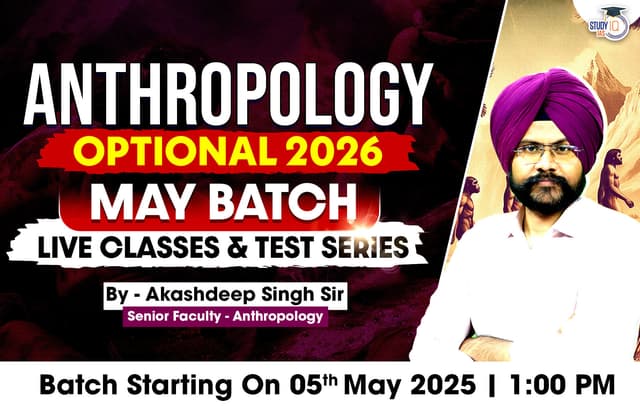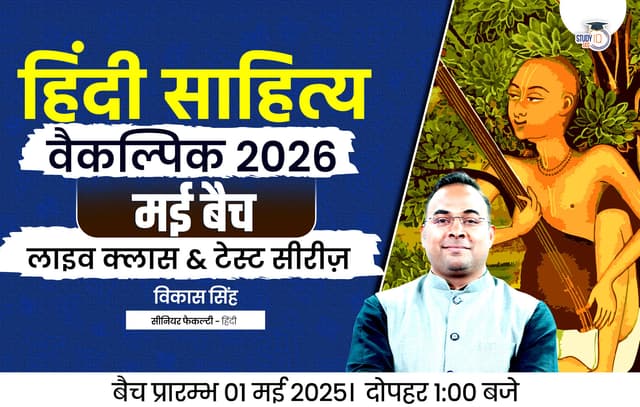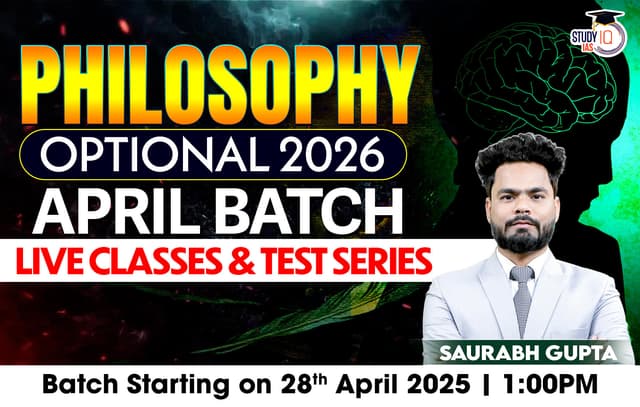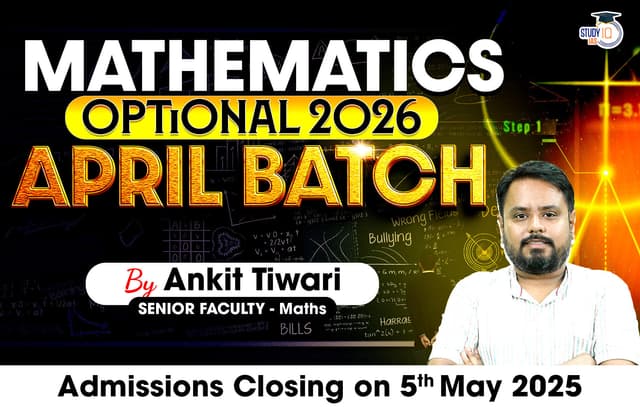Daily Quiz 05 April 2025
Quiz-summary
0 of 5 questions completed
Questions:
- 1
- 2
- 3
- 4
- 5
Information
- Click on – ‘Start Quiz’ button
- Solve Questions
- Click on ‘Next’ button
- Click on ‘Finish Quiz’ button
- Now click on ‘View Questions’ button – here you will see solutions and links.
- The test contains a total of 5 questions.
- Click on the most appropriate option to mark it as your answer.
- You will be awarded Two marks for each correct answer.
- You can change your answer by clicking on some other option.
- A Number list of all questions appears at the top side of the screen.
- You can access the questions in any order by clicking on the question number given on the number list.
- You can use rough sheets while taking the test.
- Do not use calculators, log tables, dictionaries, or any other printed/online reference material during the test.
- Do not click the button “Finish Quiz” before completing the test. A test once submitted cannot be resumed.
You have already completed the quiz before. Hence you can not start it again.
Quiz is loading...
You must sign in or sign up to start the quiz.
You have to finish following quiz, to start this quiz:
- 1
- 2
- 3
- 4
- 5
- Answered
- Review
-
Question 1 of 5
1. Question
1 pointsConsider the following statements with reference to the removal of a Supreme Court Judge:
1. A judge can be removed by Parliament through a laid-down procedure on only the ground of proved misbehaviour.
2. The constitution does not use the word ‘impeachment’ for the removal of the judge of the Supreme Court.
3. The motion for removal is required to be adopted by each house of parliament by simple majority.
How many of the above statements are correct?Correct
Answer: A
Explanation:● Statement 1 is not correct: The process of impeachment of a judge of the Supreme Court is laid down in Article 124(4) of the Constitution of India. Article 218 says the same provisions shall apply in relation to a judge of the High Court. Under Article 124(4), a judge can be removed by Parliament through a laid-down procedure on only two grounds: “proved misbehaviour” and “incapacity”.
● Statement 2 is correct: While the constitution does not use the word ‘impeachment’, it is colloquially used to refer to the proceedings under Article 124 (for the removal of a Supreme Court judge) and Article 218 (for the removal of a high court judge).
● Statement 3 is not correct: The motion for removal is required to be adopted by each house of parliament by: (i) a majority of the total membership of that house; and (ii) a majority of at least two-thirds of the members of that house present and voting. If the motion is adopted by this majority, the motion will be sent to the other house for adoption.Incorrect
Answer: A
Explanation:● Statement 1 is not correct: The process of impeachment of a judge of the Supreme Court is laid down in Article 124(4) of the Constitution of India. Article 218 says the same provisions shall apply in relation to a judge of the High Court. Under Article 124(4), a judge can be removed by Parliament through a laid-down procedure on only two grounds: “proved misbehaviour” and “incapacity”.
● Statement 2 is correct: While the constitution does not use the word ‘impeachment’, it is colloquially used to refer to the proceedings under Article 124 (for the removal of a Supreme Court judge) and Article 218 (for the removal of a high court judge).
● Statement 3 is not correct: The motion for removal is required to be adopted by each house of parliament by: (i) a majority of the total membership of that house; and (ii) a majority of at least two-thirds of the members of that house present and voting. If the motion is adopted by this majority, the motion will be sent to the other house for adoption. -
Question 2 of 5
2. Question
1 pointsConsider the following statements with reference to Vikramshila university of Ancient India:
- It was founded by Pala king Dharmapala of the Pala dynasty.
- Vikramshila universityspecialised in tantric and occult studies.
- Vikramshila is older than the Nalanda University.
How many of the above statements are correct?
Correct
Answer: B
Explanation:
- Statement 1 is correct: Founded by Pala king Dharmapala of the Pala dynasty in the late 8th to early 9 Century AD, VikramshilaMahavihar existed and flourished at the time of Nalanda.
- Statement 2 is correct: While Nalanda university flourished from the Gupta Period (320-550 AD) to the 12th Century, Vikramshila thrived during the Pala Period (8th to 12th century). While Nalanda got more international fame for teaching varied disciplines, Vikramshila was the only university that specialised in tantric and occult studies
- Statement 3 is not correct: While Nalanda is the older of the two universities, at one point, the two centres of learning, who had a common patron in King Dharmapala, exchanged knowledge and even teachers, who were called Acharyas.
- At its peak, subjects such as theology, philosophy, grammar, metaphysics and logic were taught at Vikramshila. But the most important branch of learning were the tantras because Vikramshila flourished in the days of tantricism, when occult sciences and magic were subjects of study both in Buddhism as well as Hinduism.
The university produced several eminent scholars, among them, AtisaDipankara, who played a key role in the establishment of Buddhism in Tibet.
Incorrect
Answer: B
Explanation:
- Statement 1 is correct: Founded by Pala king Dharmapala of the Pala dynasty in the late 8th to early 9 Century AD, VikramshilaMahavihar existed and flourished at the time of Nalanda.
- Statement 2 is correct: While Nalanda university flourished from the Gupta Period (320-550 AD) to the 12th Century, Vikramshila thrived during the Pala Period (8th to 12th century). While Nalanda got more international fame for teaching varied disciplines, Vikramshila was the only university that specialised in tantric and occult studies
- Statement 3 is not correct: While Nalanda is the older of the two universities, at one point, the two centres of learning, who had a common patron in King Dharmapala, exchanged knowledge and even teachers, who were called Acharyas.
- At its peak, subjects such as theology, philosophy, grammar, metaphysics and logic were taught at Vikramshila. But the most important branch of learning were the tantras because Vikramshila flourished in the days of tantricism, when occult sciences and magic were subjects of study both in Buddhism as well as Hinduism.
The university produced several eminent scholars, among them, AtisaDipankara, who played a key role in the establishment of Buddhism in Tibet.
-
Question 3 of 5
3. Question
1 pointsConsider the following statements:
- Each of an individual’s cells contain 46 DNA molecules.
- The DNA is packed inside chromosomes.
- DNA polymorphisms can be used to differentiate one person from another.
How many of the above statements are correct?
Correct
Answer: C
Explanation:
- Statement 1 is correct: Each of an individual’s cells — in one’s skin, blood, teeth, bone, etc. — contain 46 DNA molecules. One set of 23 is inherited via sperm from the father and the other 23 via the egg from the mother. Sperm and egg cells are exceptional because they have only one copy of the genome each, not two. These facts underpin the generation and use of DNA fingerprints to identify individuals and their relatives.
- Statement 2 is correct: The DNA is packed inside chromosomes. For example, chromosome no. 3 contains 6.5% of the total DNA in each cell. The chromosome 3 from the father contains DNA that is largely similar to that derived from the mother. The few parts that are different are called polymorphisms.
Statement 3 is correct: DNA polymorphisms can be used to differentiate one person from another. They can also tell us whether a paternal chromosome no. 3 came from the father’s mother or father, and likewise for a maternal chromosome no. 3. That is, polymorphisms make the tracing of ancestry possible. DNA profiles are typically generated using polymorphisms in parts of the DNA called short tandem repeats (STRs).
Incorrect
Answer: C
Explanation:
- Statement 1 is correct: Each of an individual’s cells — in one’s skin, blood, teeth, bone, etc. — contain 46 DNA molecules. One set of 23 is inherited via sperm from the father and the other 23 via the egg from the mother. Sperm and egg cells are exceptional because they have only one copy of the genome each, not two. These facts underpin the generation and use of DNA fingerprints to identify individuals and their relatives.
- Statement 2 is correct: The DNA is packed inside chromosomes. For example, chromosome no. 3 contains 6.5% of the total DNA in each cell. The chromosome 3 from the father contains DNA that is largely similar to that derived from the mother. The few parts that are different are called polymorphisms.
Statement 3 is correct: DNA polymorphisms can be used to differentiate one person from another. They can also tell us whether a paternal chromosome no. 3 came from the father’s mother or father, and likewise for a maternal chromosome no. 3. That is, polymorphisms make the tracing of ancestry possible. DNA profiles are typically generated using polymorphisms in parts of the DNA called short tandem repeats (STRs).
-
Question 4 of 5
4. Question
1 pointsConsider the following statements:
- A heat action plan (HAP) is essentially an early warning system and preparedness plan for extreme heat events.
- The National Disaster Management Authority (NDMA) implements HAPs in states that were prone to heatwave conditions.
Which of the statements given above is/are correct?
Correct
Answer: C
Explanation:
- Statement 1 is correct: A heat action plan is essentially an early warning system and preparedness plan for extreme heat events. “The Plan presents immediate as well as longer-term actions to increase preparedness, information-sharing, and response coordination to reduce the health impacts of extreme heat on vulnerable populations,” according to a government document.
Statement 2 is correct: the National Disaster Management Authority (NDMA) was implementing HAPs in 23 states that were prone to heatwave conditions, in collaboration with state authorities.
Incorrect
Answer: C
Explanation:
- Statement 1 is correct: A heat action plan is essentially an early warning system and preparedness plan for extreme heat events. “The Plan presents immediate as well as longer-term actions to increase preparedness, information-sharing, and response coordination to reduce the health impacts of extreme heat on vulnerable populations,” according to a government document.
Statement 2 is correct: the National Disaster Management Authority (NDMA) was implementing HAPs in 23 states that were prone to heatwave conditions, in collaboration with state authorities.
-
Question 5 of 5
5. Question
1 pointsVARUNA 2025 is a bilateral naval exercise between India and which one of the following countries?
Correct
Answer: A
Explanation:
- Option A is correct: The Varuna naval exercise is an annually held bilateral Naval exercise between India and France.
The 2025 edition of the Exercise included exercises ranging across multi domain environments. The structured drills were designed to further fine-tune tactical and operational proficiency in complex scenarios. Advanced Air defence drills with the participation of Rafale-M of the French Navy and MIG-29K of the Indian Navy, simulating realistic combat scenarios, honed the ability of participating units to counter aerial threats jointly. Anti-Submarine Warfare exercises involving Indian submarine and Anti-Submarine frigates of the two forces focused on deepening the understanding and proficiency in underwater domain awareness and tactics.
Incorrect
Answer: A
Explanation:
- Option A is correct: The Varuna naval exercise is an annually held bilateral Naval exercise between India and France.
The 2025 edition of the Exercise included exercises ranging across multi domain environments. The structured drills were designed to further fine-tune tactical and operational proficiency in complex scenarios. Advanced Air defence drills with the participation of Rafale-M of the French Navy and MIG-29K of the Indian Navy, simulating realistic combat scenarios, honed the ability of participating units to counter aerial threats jointly. Anti-Submarine Warfare exercises involving Indian submarine and Anti-Submarine frigates of the two forces focused on deepening the understanding and proficiency in underwater domain awareness and tactics.
Results
0 of 5 questions answered correctly
Your time:
Time has elapsed
You have reached 0 of 0 points, (0)
| Average score |
|
| Your score |
|
Categories
- Not categorized 0%
| Pos. | Name | Entered on | Points | Result |
|---|---|---|---|---|
| Table is loading | ||||
| No data available | ||||
Sharing is caring!

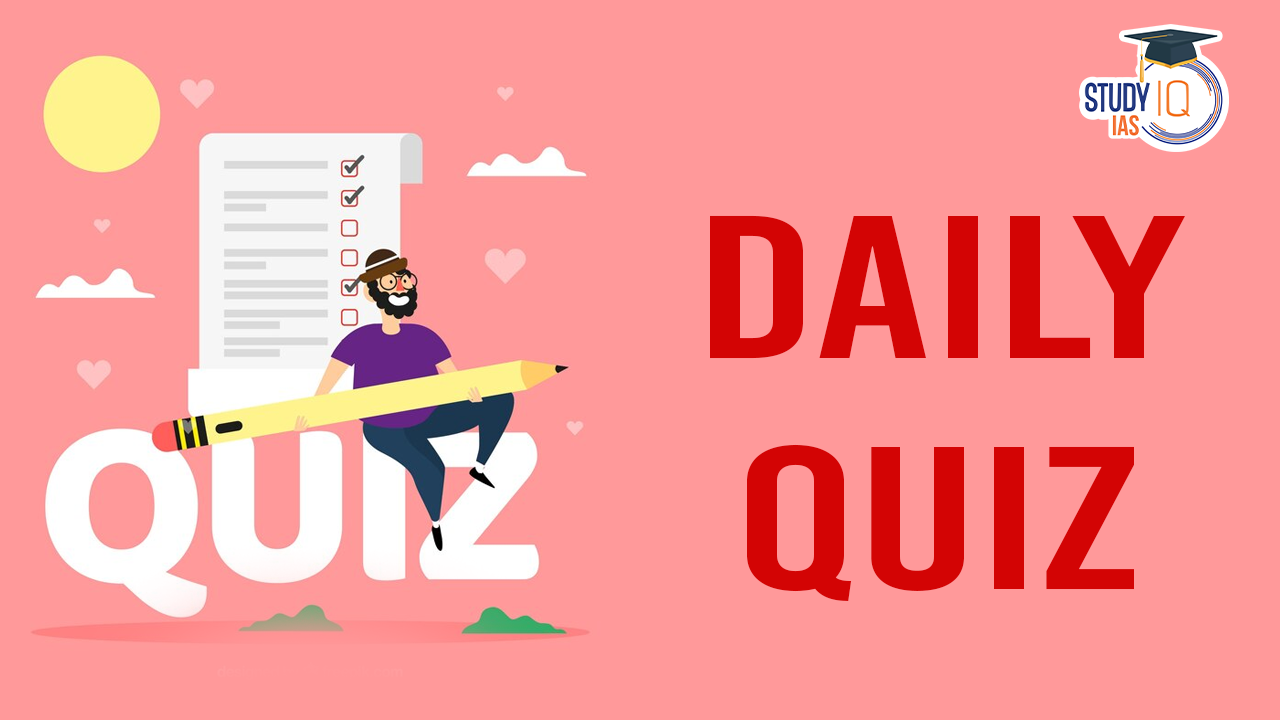
 Daily Quiz 26 April 2025
Daily Quiz 26 April 2025
